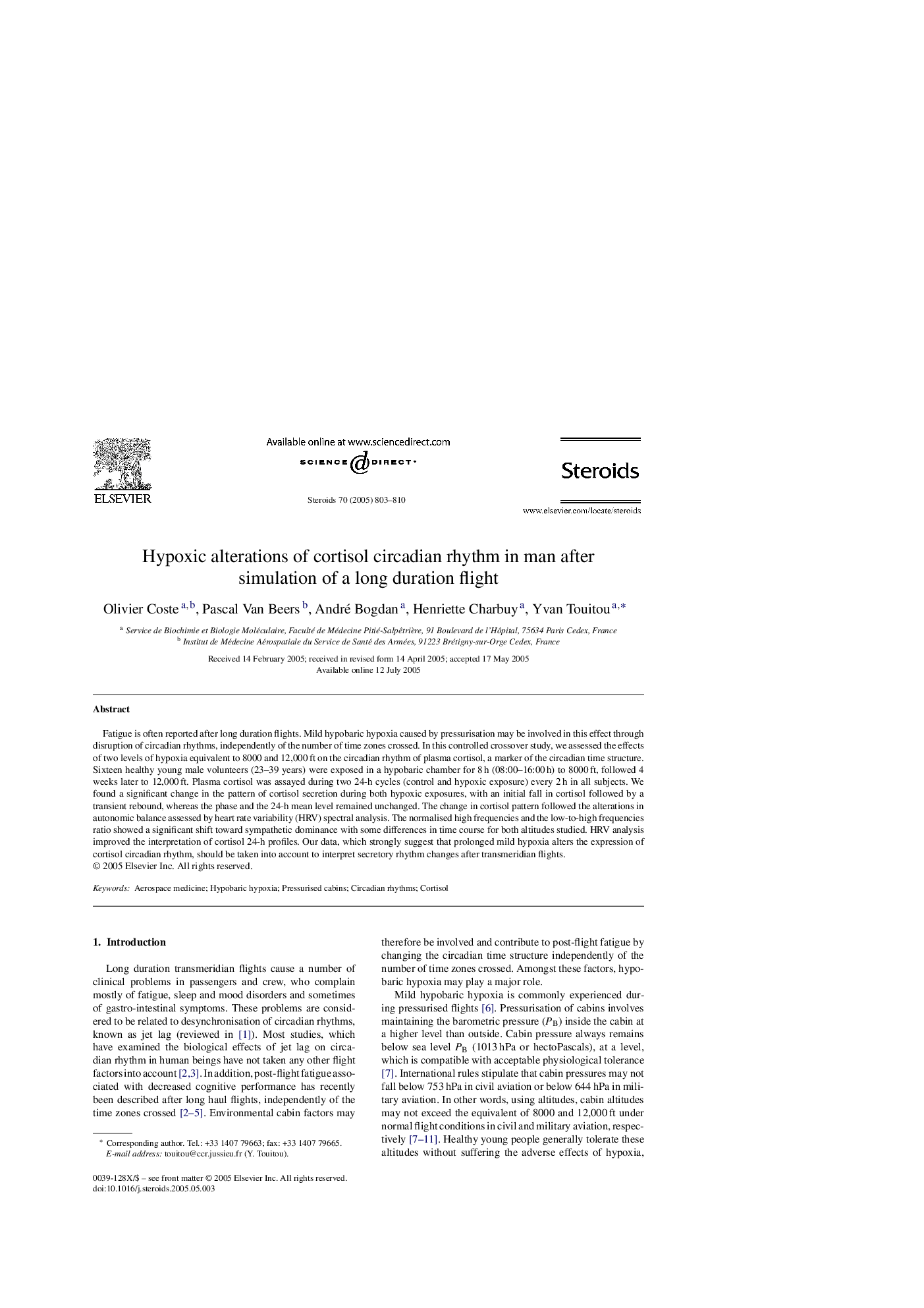| Article ID | Journal | Published Year | Pages | File Type |
|---|---|---|---|---|
| 10848112 | Steroids | 2005 | 8 Pages |
Abstract
Fatigue is often reported after long duration flights. Mild hypobaric hypoxia caused by pressurisation may be involved in this effect through disruption of circadian rhythms, independently of the number of time zones crossed. In this controlled crossover study, we assessed the effects of two levels of hypoxia equivalent to 8000 and 12,000Â ft on the circadian rhythm of plasma cortisol, a marker of the circadian time structure. Sixteen healthy young male volunteers (23-39 years) were exposed in a hypobaric chamber for 8Â h (08:00-16:00Â h) to 8000Â ft, followed 4 weeks later to 12,000Â ft. Plasma cortisol was assayed during two 24-h cycles (control and hypoxic exposure) every 2Â h in all subjects. We found a significant change in the pattern of cortisol secretion during both hypoxic exposures, with an initial fall in cortisol followed by a transient rebound, whereas the phase and the 24-h mean level remained unchanged. The change in cortisol pattern followed the alterations in autonomic balance assessed by heart rate variability (HRV) spectral analysis. The normalised high frequencies and the low-to-high frequencies ratio showed a significant shift toward sympathetic dominance with some differences in time course for both altitudes studied. HRV analysis improved the interpretation of cortisol 24-h profiles. Our data, which strongly suggest that prolonged mild hypoxia alters the expression of cortisol circadian rhythm, should be taken into account to interpret secretory rhythm changes after transmeridian flights.
Related Topics
Life Sciences
Biochemistry, Genetics and Molecular Biology
Biochemistry
Authors
Olivier Coste, Pascal Van Beers, André Bogdan, Henriette Charbuy, Yvan Touitou,
